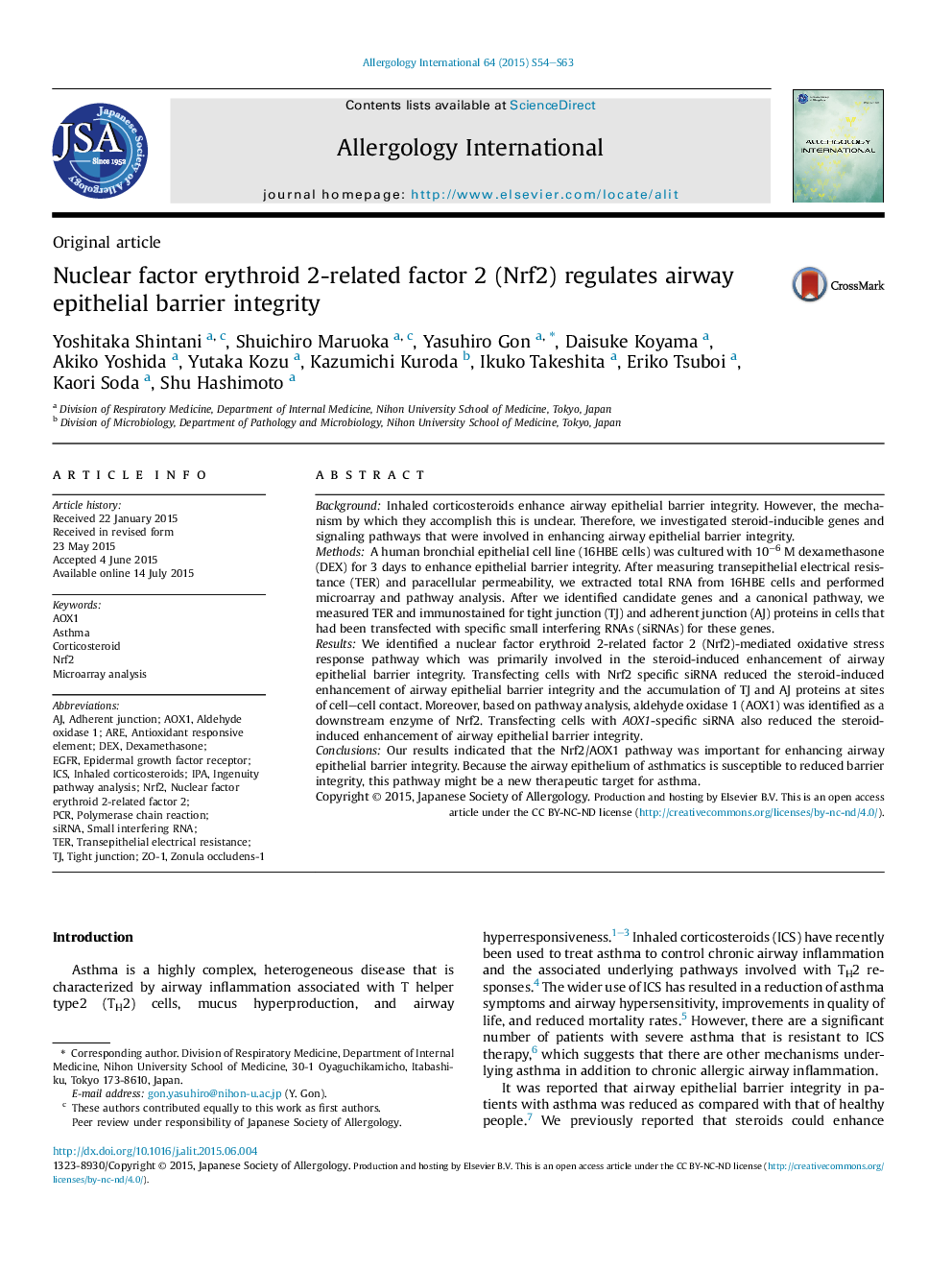| Article ID | Journal | Published Year | Pages | File Type |
|---|---|---|---|---|
| 3340594 | Allergology International | 2015 | 10 Pages |
BackgroundInhaled corticosteroids enhance airway epithelial barrier integrity. However, the mechanism by which they accomplish this is unclear. Therefore, we investigated steroid-inducible genes and signaling pathways that were involved in enhancing airway epithelial barrier integrity.MethodsA human bronchial epithelial cell line (16HBE cells) was cultured with 10−6 M dexamethasone (DEX) for 3 days to enhance epithelial barrier integrity. After measuring transepithelial electrical resistance (TER) and paracellular permeability, we extracted total RNA from 16HBE cells and performed microarray and pathway analysis. After we identified candidate genes and a canonical pathway, we measured TER and immunostained for tight junction (TJ) and adherent junction (AJ) proteins in cells that had been transfected with specific small interfering RNAs (siRNAs) for these genes.ResultsWe identified a nuclear factor erythroid 2-related factor 2 (Nrf2)-mediated oxidative stress response pathway which was primarily involved in the steroid-induced enhancement of airway epithelial barrier integrity. Transfecting cells with Nrf2 specific siRNA reduced the steroid-induced enhancement of airway epithelial barrier integrity and the accumulation of TJ and AJ proteins at sites of cell–cell contact. Moreover, based on pathway analysis, aldehyde oxidase 1 (AOX1) was identified as a downstream enzyme of Nrf2. Transfecting cells with AOX1-specific siRNA also reduced the steroid-induced enhancement of airway epithelial barrier integrity.ConclusionsOur results indicated that the Nrf2/AOX1 pathway was important for enhancing airway epithelial barrier integrity. Because the airway epithelium of asthmatics is susceptible to reduced barrier integrity, this pathway might be a new therapeutic target for asthma.
